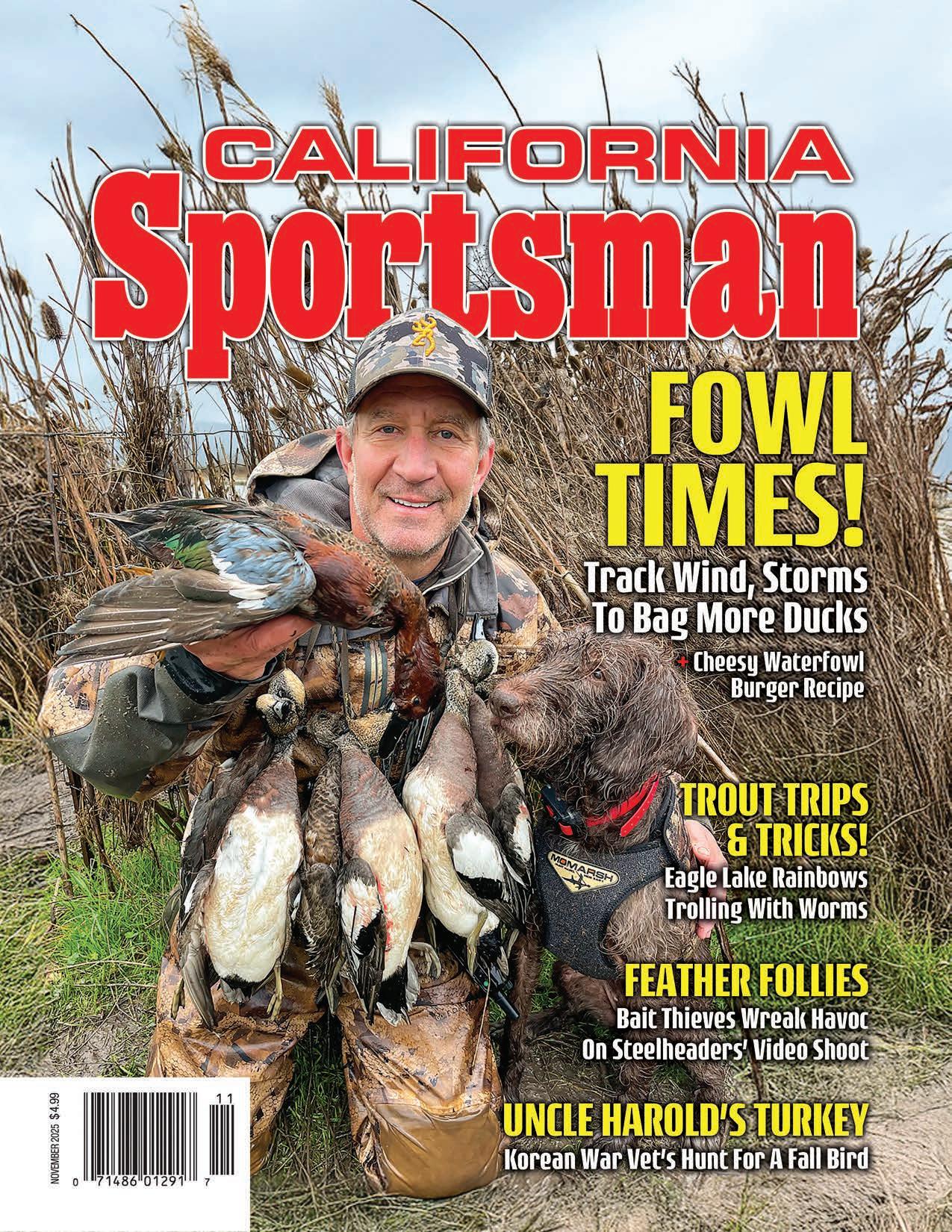








PUBLISHER
James R. Baker
GENERAL MANAGER
John Rusnak
EXECUTIVE EDITOR
Andy Walgamott
EDITOR
Chris Cocoles
WRITERS
Mark Fong, Scott Haugen, Tiffany Haugen, Tim E. Hovey, Cal Kellogg
SALES MANAGER
Paul Yarnold
ACCOUNT EXECUTIVE
Janene Mukai
DESIGNER
Kha Miner
WEB DEVELOPMENT/INBOUND
MARKETING
Jon Hines
ADMINISTRATIVE ASSISTANT
Katie Aumann
INFORMATION SERVICES MANAGER
Lois Sanborn
ADVERTISING INQUIRIES media@media-inc.com
CORRESPONDENCE
Email ccocoles@media-inc.com X @CalSportsMan Facebook.com/ californiasportsmanmagazine
ON THE COVER
“With the prime days of duck season approaching, monitor storms and anticipate the arrival and movement of ducks,” Scott Haugen advises waterfowlers this month about how to take advantage of weather changes. “Be they migratory birds dropping in or stagnant birds shifting locations, knowing where they’ll be based on storm events will give you the edge, meaning you’ll shoot more ducks.”
(SCOTT HAUGEN)
MEDIA INC PUBLISHING GROUP
941 Powell Ave SW, Suite 120 Renton, WA 98057 (800) 332-1736 • Fax (206) 382-9437
media@media-inc.com





Lassen County’s massive Eagle Lake is one of California’s premier and most beloved trout fisheries, where the rainbows are big and beautiful and the backdrop is spectacular. Our correspondent Cal Kellogg explains why this time of year is prime time for catching its iconic fish and how to fill your stringers with trout.
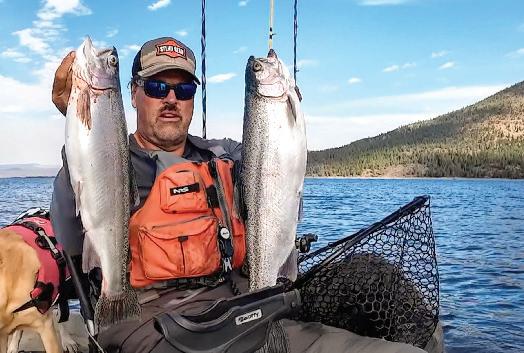
With Thanksgiving just around the corner, perhaps a hunt for a holiday bird is on your agenda. Fall is a whole different ball game than hunting gobblers during California’s spring season, so enter longtime scribe Tim Hovey, who shares his tips for harvesting an autumn tom or hen. Hovey also recalls a memorable turkey hunt with a Korean War veteran.
Waterfowl hunting really gets going this month as the Golden State transitions to more crisp and often wetter weather with winter approaching. As Scott Haugen writes, “Tracking large-scale storms allows you to anticipate when ducks might arrive at your hunting spots.” Scott breaks down how to adjust on the fly to changing weather and wind conditions to maximize your success in the marsh. And Chef Tiffany Haugen’s mouth-watering waterfowl burger recipe completes this month’s From Field to Fire feature!
Cal Kellogg, who also writes about trout trolling with worms this month, makes a cameo appearance in Mark Fong’s latest adventure. Fong met up with Kellogg, a guide and a fishing company owner for a YouTube filming session on the Feather River. They were out for steelhead, but pesky and hungry pikeminnows almost ruined the production, Fong recalls as he also previews an unusual catch-and-cook video.




Our Tim Hovey wrote a really good piece in this month’s issue. He talks about the challenges of hunting fall turkeys (page 12), and how the approach for finding birds represents a completely different ball game than chasing spring gobblers.
But Tim also shared one of his memorable autumn hunts for turkeys, and the story included helping his buddy’s uncle, Harold, locate and harvest a hen. Harold was a United States Army Korean War veteran, among other accomplishments made over the course of his life. The two hunters also shared a conversation on the drive home.
“When I dropped Harold off, I started thinking about that memorable drive back. As Harold discussed the high points of his life, I kept thinking what an amazing life he’s led. He told me he was a sergeant in Japan during the Korean War, mentioning that he saw some combat. He didn’t elaborate and I didn’t ask,” Hovey told me. “I have a couple of Vietnam veterans in my family, and I learned long ago that when they talk about war and their time there, you listen and nothing more.”
Like Uncle Harold, my dad Stanley Cocoles was also a proud veteran, having served in the Navy and earning a rank of petty officer in the late 1940s and early 1950s working below deck on a mine sweeper and then a submarine repair ship.
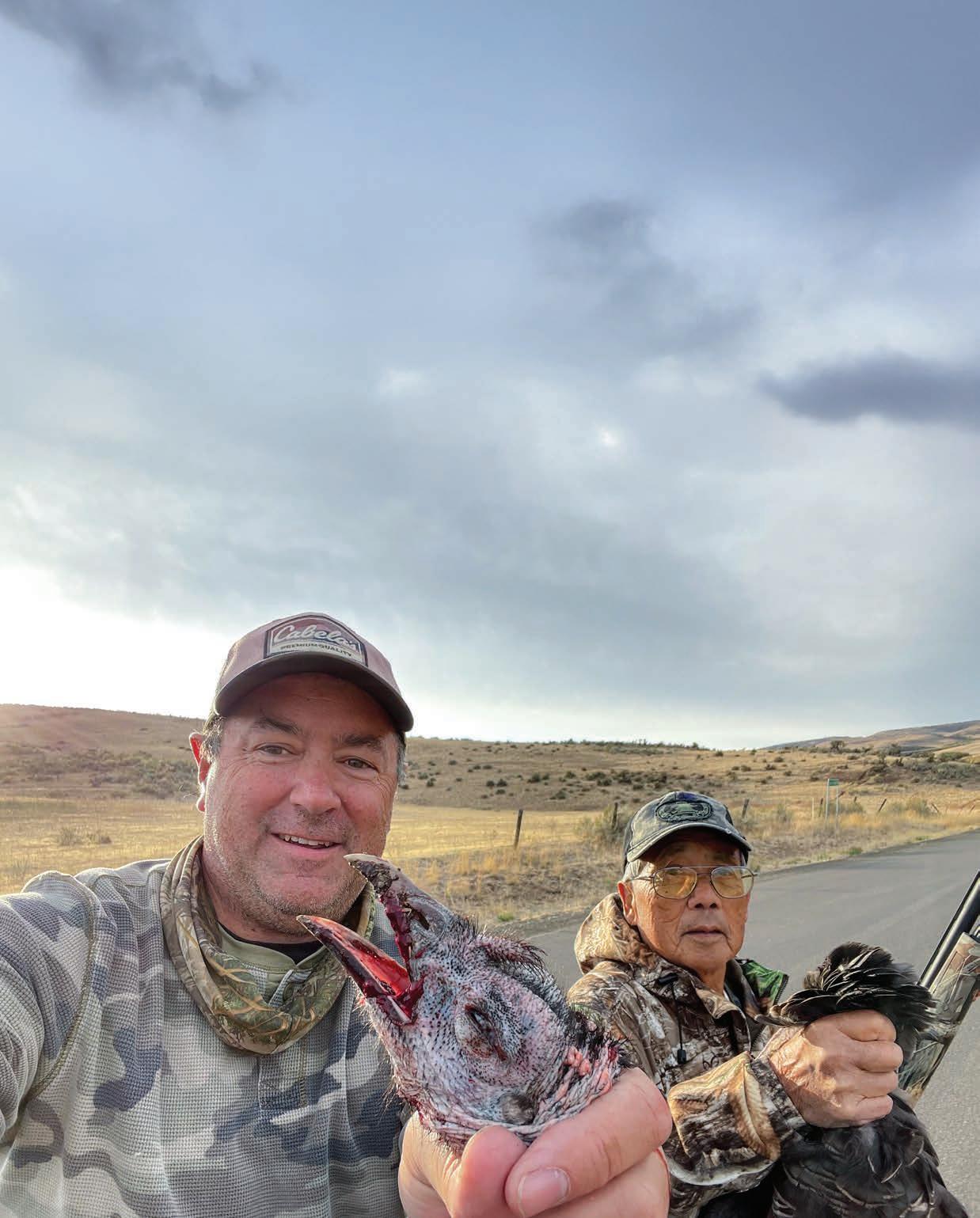
He wasn’t much of an outdoorsman – he was a lifetime gearhead and classic car collector – though as I’ve written in this space before, we shared a lot of fun fishing trips together around California.
My dad also once relayed a hunting story to me about going out with buddies during or shortly after his Navy stint ended. From what I can tell, it was the only hunting trip he ever took, and while he didn’t get a deer that day, he admitted that was never his thing anyway. But he talked fondly about the friendships he made with his Navy buddies, including a couple guys he’d introduce me to, one of whom fished with us when I was a kid.
It was so inspiring to learn more about Hovey’s experience with his friend’s elderly uncle. Their interaction left quite an impression. Hovey called the drive home with Harold “a beautiful and enlightening bonus to a successful hunt.”
“Back home, I unloaded my gear, and as I always do, I told my wife Cheryl about my hunt. For 20 minutes I retold the Harold stories and what he’s done over a colorful and prestigious lifetime,” Hovey recalled. “Once I was finally finished, she looked at me puzzled and asked, ‘OK; but did you get a turkey?’ I was so mesmerized by my time with (Harold) that I forgot we were on a hunt. ‘Oh yeah; both me and Uncle Harold killed birds!’ My time with him will be what I remember most about that hunt. The turkeys were just a bonus.”
As we prepare to celebrate Harold, my dad and all those who have served their country on November 11’s Veterans Day, thanks to all of you! -Chris Cocoles

1 Kokanee Power Annual Awards and Fundraiser Dinner, Evalynn-Bishop Hall, Ione; kokaneepower.org
1 Imperial County Zone white geese season opens
1-9 Fort Hunter Liggett only tule antlerless elk archery season dates
1-23 Zone D-12 general deer season dates
4 Southern San Joaquin Valley Zone scaup season opens
7 Colorado River Zone scaup season opens
7 Lake Sonoma pig hunting season opens; (707) 694-1916
8 General/statewide pheasant season opens
8 Late dove season opens
8 Fall wild turkey season opens
8 NorCal Guides and Sportsmen’s Association Annual Fundraising Dinner, FIVE30 Event Center, Marysville; ncgasa.org/product/2025-fundraising-dinner
8 California Waterfowl Butte City-Glenn Banquet, Glenn Pheasant Hall; (916) 275-5143
8-9 NorCal Trout Challenge Tournament of Champions, Collins Lake; anglerspress.com
8-30 Gabilan tule bull and antlerless elk general season dates
8-30 La Panza Period 2 tule bull and antlerless elk general season dates
12-23 Northeastern Rocky Mountain antlerless elk general season dates
22 “Free” hunting day in California (if additional requirements are fulfilled); wildlife.ca.gov/Licensing/Hunting/Free-Hunting-Days
29 Northern black brant season opens
30 Balance of State black brant season opens
6 Balance of State American crow season opens
6 Most desert bighorn sheep hunting seasons open
7 Last day of fall wild turkey season
18 Second Northeastern Zone scaup season opens
20-28 Southern Zone band-tailed pigeon season dates
21 Last day of statewide pheasant season
22 Second archery-only pheasant season opens
23 Fort Hunter Liggett Period 3 apprentice tule bull elk hunt season opens
23 Fort Hunter Liggett Period 3 apprentice antlerless tule elk hunt season opens
28 Last day of general bear hunting season
Note: General bear season opens concurrently with general deer season in the A, B, C, D, X8, X9A, X9B, X10 and X12 deer hunting zones and extends through December 28, 2025. For those portions of Zones X1, X2, X3a, X4, X6a, X6b, X7a, and X7b open to bear hunting, the general bear season opened on October 11, 2025, and extends through December 28, 2025.
For a complete list of California bass tournaments, go to wildlife.ca.gov/Fishing/ Inland/Contests.

Among the waterfowl hunting seasons set to open in November are scaup in the Southern San Joaquin Valley and the Colorado River Zones. (SCOTT FLAHERTY/U.S. FISH AND WILDLIFE SERVICE)

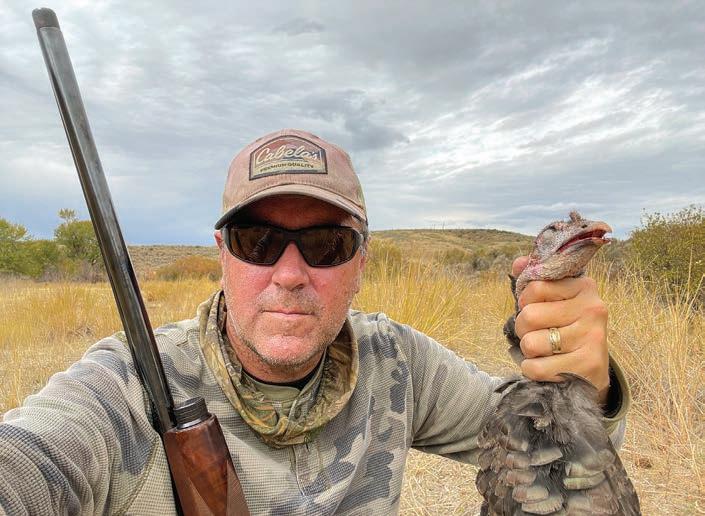

By Tim E. Hovey
Experienced spring turkey hunters understand what it takes to bring a longbeard into range. Placing a decoy or two in a location where birds exist, combined with some subtle calling, will almost certainly get the attention of a lovesick tom.
The draw to find a female is so strong during the spring that males become almost blind to the dangers of hunters. I’ve seen male turkeys killed during spring hunts and another tom will come walking right in to investigate the downed bird. If you’re looking to harvest a big mature tom, springtime is the time to hunt. But fall turkey hunting is a completely different animal.
With autumn not being their season for breeding, fall turkeys aren’t at all interested in pairing up and finding a mate. Subsequently, they will not respond well, if at all, to calls or decoys. Males frequently gather up in bachelor groups and are not often associated with females. In fact, it almost looks like they purposefully avoid each other, traveling in different areas during the day. I’ve even seen male and female groups of turkeys roosting in different trees. If you’re wanting to bag a turkey during the fall season, you’re going to have to change your turkey hunting tactics.
Fall turkey season in California begins on November 8 and runs
through December 7, with hunters able to harvest one turkey of either sex daily and a total of two for the season. A valid California hunting license and an upland game bird stamp are required. And as always, nonlead ammunition is required to hunt any game in the state.
Where spring turkey hunters use decoys and calls to get birds close, fall hunters need to rely on mostly spotand-stalk tactics to be successful. Finding a roost tree is a great start for fall hunting, but don’t think placing a decoy close will get the birds interested. I’ve experienced turkey fly-downs during the fall in which birds completely ignore their plastic compatriots. Fall turkeys are just in a completely different mindset.
Honestly, my fall turkey success has always been through spot-andstalk hunting. Locating feeding or moving birds from a distance using binoculars, I’ll gauge their movement and direction and attempt to quietly get in front of them. Setting up in the thick brush and wearing camo, I can hopefully get a bird to move close enough for a shot.
I’ve also noticed that getting close to a small group of birds is easier than doing so with a large flock of turkeys. Obviously, there are fewer eyes in a smaller group than in an entire battalion of birds.
You don’t want to just bust up a larger group so you can chase the stragglers. Once a group is disturbed,
they become even more hyperaware of danger and will be tough to get close to. Spot-and-stalk hunting and anticipating the birds’ travel route is your best bet.
One thing that becomes a huge benefit for a fall hunt is preseason scouting. Turkeys will roost in the same group of trees, travel the same feeding routes and – especially in the fall when they aren’t being overly bothered by hunters, decoys and calling – be just a tiny bit calmer than spring. Just keep in mind they are still wild animals and on edge constantly.
If hunters can access the area prior to the season and study these movement routes, they can set up early along these paths and be waiting when turkeys move through. This is, of course, a waiting game and will require patience, stealth and camo apparel. For a bird that now ignores springtime theatrics, being set up in front of them on an established travel path is one of the best ways to be successful on a fall turkey hunt.
A couple of years ago, I was invited on a fall turkey hunt by my buddy Derek. After a short back and forth, he mentioned he was going to hunt a large private parcel with his wife. If I could go, I would be paired up with Uncle Harold. Derek gave me directions to the spot and told me to meet him there 90 minutes before

sunrise. Excited to chase fall birds, I was just happy for the invite. Prior to this hunt, I had never met nor heard of Uncle Harold.
I pulled into the hunting spot in the dark and quietly got out. Derek and his wife JoAnne were standing next to their vehicle going over the hunt plan. I walked over and while
“Finding a roost tree is a great start for fall hunting, but don’t think placing a decoy close will get the birds interested. I’ve experienced turkey fly-downs during the fall in which birds completely ignore their plastic compatriots,” Hovey writes. “Fall turkeys are just in a completely different mindset.” (TIM E. HOVEY)
whispering, we decided on the best way to hunt the property. Seeing only the two of them, I assumed that Uncle Harold had decided not to hunt that morning.
To cover more ground, Derek decided we should split up. He pointed to a tree line a few hundred yards away and suggested I hunt that
side, while he and his wife would hunt the other side of the property. Since we were still in the dark and I had never been on the property before, I asked Derek about the best route to take to the trees. That’s when the back door of his Suburban slowly opened.
A slight figure, maybe 5 feet tall and excited, slowly moved over to us. At first, I thought it was Derek’s 13-year-old son who was taking Harold’s place on the hunt. But as the person got close to Derek’s headlamp light, I could see he was older than that, a lot older.
Uncle Harold had been sleeping in the back seat when I arrived. Derek introduced us and had to speak a lot louder to Harold to relay my name. In fact, he had to say it three times. I shook Harold’s hand and told him that he and I would be hunting together. His response was, “Huh?” Uncle Harold was 87 years old.
Derek and his wife headed to the northern part of the property, and me and Uncle Harold headed south. In the nearly dark conditions and unfamiliar terrain, Harold was stumbling all over the place. Even though we had headlamps, my new partner’s device wasn’t too bright. I steadied him by grabbing his arm and led him across the plowed field. Once at the tree line, I set him up under one of the larger trees and told him I was going to hunt about 100 yards to his left along the same tree line. “Huh?” he said.
Harold and I sat along that tree line for over an hour. I set up directly beneath a roosted tom, and 10 minutes before sunrise he loudly exploded from his tree in the exact opposite direction. Two more male birds followed suit but never offered a shot. After that early blunder, not much else was moving.
I walked down to where Uncle Harold was sitting and found him asleep. I gently woke him up and we started hiking back to the vehicles.


When he met the elderly uncle of a good friend, Hovey was determined to help the gentleman harvest a fall bird. Sure enough, their patience allowed the author and “Uncle Harold” to each bring home a hen, just in time for Thanksgiving! (TIM E. HOVEY)

Halfway back, I noticed movement in a small depression near the end of the tree line. I stopped Harold and looked through my binoculars. All I saw were the tops of over a dozen turkey heads. They were just milling around and occasionally picking at the ground. If we stayed low, we could sneak right up to them.
I grabbed my partner and practically dragged him near the closet mound that made up the depression. Earlier, while I’d sat in the dark, I decided that I really wanted to get Uncle Harold a turkey.
UNCLE HAROLD’S BIG MOMENT
We sat on the ground out of breath. I don’t think Harold even knew
why we were moving towards the depression. I looked at him and pointed over the small hill. He carefully peeked over, saw the birds and instantly went into hunter mode. He bent down, shouldered his shotgun and got ready. I looked over at him and held up three fingers. He nodded and on three we stood and fired. The flock instantly dispersed, but once the dust settled, two hen turkeys lay in the dirt. After a quick celebration, we grabbed our birds and took a few photos.
That day was one of my favorite turkey hunts. On the drive home, I got to ride with Harold. I found out that he was a veteran of the Korean War and had served four years in
Japan with the U.S. Army. After getting out of the service, he held a long list of jobs over the years. He ran the family grocery store, was a New York Life insurance agent, a taxidermist and, at one time, owned the largest fishing tackle shop in Yuma, Arizona.
When I dropped him off, I shook his hand and told him it had been a pleasure hunting with him. In all honesty, I enjoyed hearing all of Uncle Harold’s stories more than the hunt.
You may not have an Uncle Harold in your bag of fall turkey hunting tricks, but if you spot birds at a distance and can sneak into their route, you just might harvest a holiday dinner like he and I did. CS
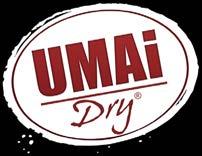



Give them everything they need to turn their harvest into something truly unforgettable. Our charcuterie and salumi kits are perfect for hunters who want to level up their skills this winter.
Whether they’re crafting their first traditional dry, fermented duck sausage or curing a mouth-watering elk bresaola for the holidays—this is a hobby that’s as tasty as it is satisfying.

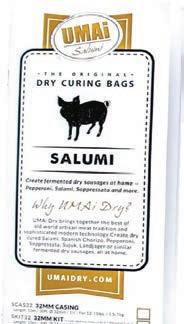



Learn how in just minutes and get started with your next wild game — just in time to make this season extra merry!







By Scott Haugen
November marks the start of winter weather, and tracking the wind is key to consistent duck hunting success. This comes in three forms: monitoring winter storms; watching local weather conditions; and keeping an eye on the wind while on the hunt.
Tracking large-scale storms allows you to anticipate when ducks might arrive at your hunting spots. At the same time, a lack of storms explains why ducks are slow to migrate south or move into your area. Last winter’s mild conditions and lack of storms resulted in slow duck hunting up and down the Pacific Coast. You’d be surprised how much bad weather ducks and geese can endure before flying south, especially if food is readily available where they’re hanging out.
On a local scale, closely monitor wind direction and speed. These two factors will help you better understand where birds will be working and, more importantly, understand why. In turn, you’ll figure out where and when to hunt.
When tracking big weather events, the key to hunting success is dependent upon being prepared to hunt where the birds will be. If your favorite creek or open pond isn’t influenced by the weather conditions, it may not be worth hunting. Having the proper blind, decoys and a way to reach where birds want to be based


By Tiffany Haugen
Many waterfowl hunters look for ways to make their birds taste better. While the real secret lies in cleaning ducks and geese of all bloodshot prior to cooking, plus not overcooking them, there are some recipes that make a difference. This is one of them.
Opinions vary on whether the hamburger originated in Hamburg, Germany, or has deeper roots among Mongol horsemen. Any way you grind it, hamburgers with all the trimmings are a popular item, even among waterfowlers.
Lightly seasoned ground or finely chopped waterfowl (ducks or geese) makes a great burger option. Feel free to amp up the flavors with your favorite burger additions. To keep with German flavors, the burger in this recipe is served on a bed of caramelized onions and sauerkraut and topped with a cheddar/ Swiss cheese sauce.
1½ pounds ground or finely chopped waterfowl breasts and thighs
2 tablespoons finely chopped parsley
2 tablespoons stone ground mustard or Dijon mustard
1 teaspoon black pepper
1 teaspoon paprika
½ teaspoon granulated garlic
½ teaspoon salt
Olive oil for pan frying
1 tablespoon olive oil
1 tablespoon butter
One onion
1 cup sauerkraut
Four pretzel buns
In a medium bowl, mix ground or chopped waterfowl with parsley, mustard and spices. In a large skillet, sauté onion in olive oil and butter on medium-high heat until lightly browned and caramelized. Add sauerkraut and continue to sauté two to three minutes until there is no liquid in the skillet. Remove onion and sauerkraut mixture and set aside.
Add another tablespoon of olive oil to the skillet and place on medium heat. Form four patties from meat mixture and place in a skillet. Turn heat to high and brown patties on each side. Turn heat to medium-low and finish cooking to desired
doneness. Place onion/sauerkraut mixture on the dressed (mayonnaise or mustard) bottom of the toasted pretzel bun, then top with waterfowl patty and drizzle with cheddar/Swiss cheese sauce (see recipe below) or cheese sauce of choice.
CHEDDAR/SWISS CHEESE SAUCE
1 tablespoon butter
1 tablespoon flour
1 cup milk
½ cup shredded cheddar cheese
½ cup shredded Swiss cheese
In a small saucepan, melt butter on medium-high heat. Add flour and whisk for one minute. Slowly add milk, whisking constantly. Remove from heat and stir in shredded cheeses. Keep warm until ready to serve.
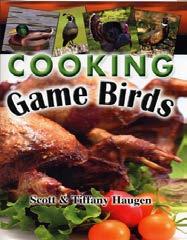
Editor’s note: For signed copies of Tiffany Haugen’s popular book, Cooking Game Birds, visit scotthaugen.com.
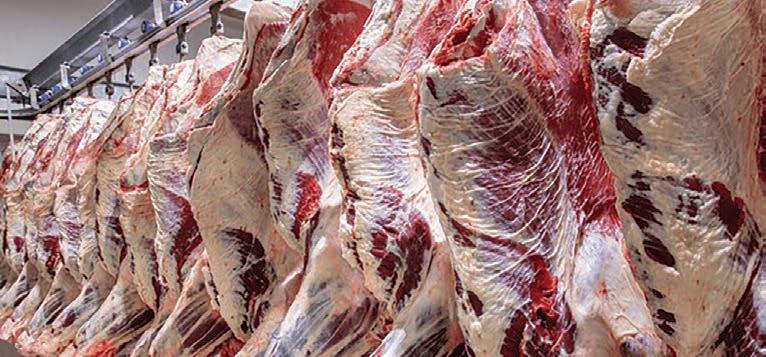


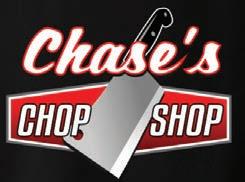
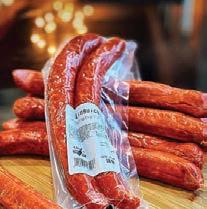







on storm activity are all critical to shooting ducks.
Last year we had a lot of mallards and pintails drop in early. The wigeon were very late showing up. The pintails usually shoot straight through, but mild weather and lots of food saw them sticking around. Mallards will stay in the valley we hunt as long as there’s food.
Wigeon remained north of us a couple hundred miles and they were getting hammered by hunters. When they did move south, the wigeon headed down the coast rather than traveling inland. That’s when I closely watched the coastal
storms. A hard storm on the coast often pushes ducks over the Coast Range and into our valley; at least that’s what I speculate. I could be wrong; it could just be enough of a storm to move wigeon around our valley, or perhaps a combination of the two. Tracking storms and hunting every day possible will teach you a lot about bird movement.
Also, pay attention to storms on a micro level. This is nothing more than watching wind and rain direction and varying levels of intensity while you’re hunting.
There may be days where you’re changing the position of the decoys four or five times in a morning, or even picking them all up and moving to a totally different spot because the wind wasn’t behaving as hoped.
If newly arriving birds show up, have decoys ready to help specifically bring them in. I often stash species-specific decoys – in both floaters and silhouettes – in multiple hunting locales. Once storms push ducks down and local storms make their feeding, roosting and flight paths more predictable, I’ll include these decoys in the spread. Usually they’re in the form





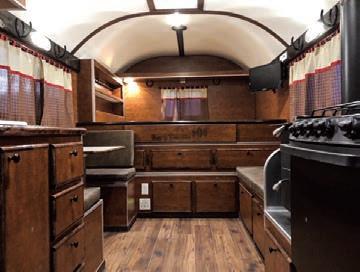



of pintails and shovelers that arrive in big numbers. I like the white colors these decoys add to a spread, especially on windy and gloomy days.
When wigeon arrive, it’s by the tens of thousands. That’s when I add more wigeon floaters and plaster the banks and shallows with Big Al’s wigeon silhouettes. I might use five dozen to 50 dozen silhouettes, depending on what scouting reveals and how many of us are hunting. Once wigeon find
Haugen played the wind on this morning hunt and came away with a prized cinnamon teal. “With the prime days of duck season approaching,” the author writes, “monitor storms and anticipate the arrival and movement of ducks.” (SCOTT HAUGEN)
moving into the flooded field we were hunting. At about 10 a.m., the wind died down and we had an incredible hunt.
Not only will wind physically move birds, it’ll expose and shift food sources. That’s what happened on the hunt with the two kids. The wind blew 20 mph all night and gusted to over 40. I knew this would uproot food in the shallow pond and move it to the north end. I also knew that birds wouldn’t land there in high winds, but that they’d flock in once things calmed down. We were in position when the timing was right.
The core group of guys I hunt with all have two things in common. First, all they care about is hunting ducks. Second, they always, always have extra decoys and a blind in their trucks. This allows us to hunt wherever necessary, based on heavy winds and storms, or a lack thereof.
Many times during the course of the season we change plans very late the night before a hunt. Or we’ll wake up at 4 a.m. to texts saying plans have changed. These changes are almost always based on wind direction and storms. If you are serious about killing ducks, be willing to move at a moment’s notice and make frequent adjustments, even if they’re minor. It could be as simple as pulling a wing spinner decoy that’s rotating unrealistically fast or moving a dozen decoys out of the waves and into calmer water.
a food source, they’ll descend on it until it’s devoured, then move on.
Last season I took out two youth hunters. They commented on how slow the action was. I advised them that if they really wanted to learn how to hunt ducks, they’d put their phones down and pay attention. They did and were amazed at how many ducks were flying in the distance.
“Why aren’t they coming to us?” one kid asked. I told him the heavy wind was keeping the birds away, but once it let up, birds should start
With the prime days of duck season approaching, monitor storms and anticipate the arrival and movement of ducks. Be they migratory birds dropping in or stagnant birds shifting locations, knowing where they’ll be based on storm events will give you the edge, meaning you’ll shoot more ducks. CS
Editor’s note: For signed copies Scott Haugen’s best-selling books, including cookbooks, visit scotthaugen.com. Follow Scott on Instagram and Facebook.


• Easy Loader & Deuce accommodate 2 dogs up to 65 lbs each
• EZ-XL accommodates 2 dogs over 65 lbs each
• Made from High Density Polyethylene with UV protection
• Easy Loader fits most full size pickups, SUVs & large UTVs

• Deuce fits smaller pickups, SUVs & UTVs
• EZ-XL is for larger breed dogs & full size vehicles
• Vents, cold weather door covers, insulated covers & custom kennel pads available







By Scott Haugen
Last spring my wife Tiffany went to Vietnam. She watched an artist on the street as he worked his magic, drawing a puppy. She showed him a picture of Echo and Kona, our two pudelpointers. He made a
drawing for her. She gave it to me as a gift. It hangs in our hallway where we see it every single day. It brings joy to my life.
Echo is almost 12; Kona is 9. Echo is brown; Kona is black. Both have long coats, which is not the rule for the breed. They have the same father, Lon, perhaps the most
famous pudelpointer to ever walk the Earth. Tiff’s act of kindness struck a chord. I started collecting everything pudelpointer that I could find. Here are some sources I’ve found that will bring a spark of happiness to your life, no matter what breed of dog you’re most passionate about.

I love the Bird Dog Of The Day page on Instagram. It’s a fun site devoted to sharing great photos and stories of our best friends. Recently, a fellow pudelpointer lover gave me a sticker of a black pudelpointer. It instantly got my attention; one, because it was a pudelpointer, and two, because it was black. Only 4 percent of pudelpointers are black, and the fact the sticker had a long coat – like Kona – made me like it even more. That’s when I discovered that Bird Dog Of The Day offered more than fun social media content.
They have an awesome website (birddogoftheday.com) loaded with
fun items. Nearly 30 dog breeds are featured on their website, including some very unique ones. I ordered a hoodie, T-shirt, Christmas cards, Christmas ornaments, more decals and a tumbler, all of pudelpointers. And because I have a brown and black pudelpointer, I had to get a mix of stuff.
I even got a decanter that’s glassetched with a pudelpointer. To go with the decanter, a pudelpointer and a mix of waterfowl and upland glasses were in order.
On this year’s Christmas wish list from Bird Dog Of The Day are wine glasses and wooden coasters, along with a hoodie and T-shirt featuring a brown pudelpointer,
for Echo. With those, my collection of everything pudelpointer will be complete. Almost.
Another gun dog resource that appeals to me is Project Upland (projectupland. com). Their timely articles and social content are educational and fun. When I discovered their new pudelpointer coffee mug last year, I just had to have one. Their matching pudelpointer decal and T-shirt were also must-haves. I’ve about worn out the T-shirt.
In addition to fun attire, Project Upland features loads of editorial content, from magazines to books, podcasts to videos. If you’re serious
about taking your knowledge of versatile gun dogs to the next level, check out all Project Upland has to offer. A magazine subscription would make a great Christmas gift.
When High Camp Flasks (highcampflasks.com) announced personalized engraving, I jumped on it. I sent in a profile piece of art designed after Kona. In less than a week I had a classy, etched Firelight Flask. It works great for spirits, hot coffee and more. All High Camp Flasks we’ve owned are impressively durable. The magnetic tumbler design is ingenious and holds firm, while the easy screw cap is 100-percent leakproof, even when carried in backpacks or totes.
When it comes to celebrating our dogs, there’s no such thing as going overboard. You can go online and have stickers made of your dog, along with 3D magnets, ornaments and more. And be sure to have the best photos saved on your smartphone, for you never know when you might bump into an artist on the street who can whip you up a memory to last a lifetime. CS
Editor’s note: Scott Haugen is a full-time writer. See his basic puppy training videos and learn more about his many books at scotthaugen.com. Follow his adventures on Instagram and Facebook.






By Cal Kellogg
Nestled high in the northeastern corner of California, surrounded by wide-open sagebrush country and rimrock plateaus, Eagle Lake is a fishery unlike any other.
The sprawling natural lake in Lassen County has a mystique all its own: It’s remote, rugged and home to one of the most unique trout species on the planet – the Eagle Lake rainbow trout.
For generations, anglers have made
the pilgrimage to Eagle Lake to chase these broad-shouldered, crimsonstriped fish that fight with a mix of steelhead ferocity and lake trout stamina. It’s a place where time slows, where crisp mountain air and the call of sandhill cranes accompany every cast, and where fall fishing can rival any trout destination in the West.
EAGLE LAKE SITS AT an elevation of 5,100 feet and covers roughly 22,000 acres when full, making it California’s second-largest natural lake after

Clear Lake. It was born from volcanic activity – a natural basin carved by uplift and sealed by lava flows thousands of years ago. Because of this, the lake has no surface outlet, and the minerals trapped within it make its water slightly alkaline.
This unique chemistry once spelled trouble for trout survival, but nature had an answer: the Eagle Lake rainbow trout, a strain adapted over millennia to thrive in these conditions. These fish tolerate the lake’s alkalinity and grow fast



thanks to an abundance of tui chub and aquatic invertebrates. The result is one of California’s most robust wild trout ecosystems. It’s a selfsustaining population supported by the California Department of Fish and Wildlife’s hatchery program, which uses broodstock derived from the native strain.
But Eagle Lake’s fishery hasn’t always had smooth sailing. Decades ago, water diversions, drought and natural cycles took their toll, causing fluctuating water levels and habitat loss. Concerned anglers, scientists and local communities
rallied together. The result was a long-term cooperative management plan involving CDFW, the U.S. Forest Service and groups like Eagle Lake Guardians and Eagle Lake Trout Unlimited. This collaboration ensured the protection of spawning tributaries such as Pine Creek, critical to the trout’s life cycle.
The success story is one of California’s great conservation triumphs – proof that anglers and agencies working together can preserve both a fishery and its heritage.
Today, Eagle Lake remains a symbol of what stewardship can
achieve. This is a wild trout lake thriving in a semi-arid landscape where you’d least expect it.
EAGLE LAKE IS ROUGHLY divided into two main basins – the shallower northern end, with its weedbeds and flats, and the deeper southern basin, which drops to 100 feet near the old Eagle Lake Marina and Spaulding Tract. During the spring, the shallows teem with trout feeding on emerging insects, snails and juvenile tui chubs. But as summer heats up, water temperatures climb, pushing trout deeper into the southern basin, where cool water and oxygen hold steady.
From mid-September through November, an annual transformation begins; it’s magic. Cooler nights and shortening days set the lake’s trout into motion. They migrate back toward the shallows and feed voraciously before winter. This is when Eagle Lake reaches its peak, and it’s when savvy anglers know it’s time to go.
Fall is the season that defines Eagle Lake. Crisp mornings, mirrored sunsets and the possibility of a 5-pound trout on every pass are the stuff of angling dreams. Water temperatures drop into the ideal







An excellent venue for retreats, team-building activities, weddings, and family reunions, Odell Lake Lodge & Resort offers cozy cabins, delicious food, boat and slip rentals, and a newly designed 18-hole disc golf course. It’s the perfect place to gather, connect, and create lasting memories in a stunning natural setting. Enjoy fishing, hiking, and camping in the summer, or snowmobiling, cross-country skiing, snowshoeing, and fireside relaxation in the winter. This Fall, take advantage of the brand new sauna at lakeside as part of your adventures! Experience over a century of mountain magic—any season, every reason.


range (50 to 60 degrees), oxygen levels balance and aquatic life stirs across the lake.
The Eagle Lake rainbow trout, aggressive and well-fed, begins hunting in the shallows again. Fish that spent summer suspended over deep water now patrol rocky points, dropoffs and weed edges in as little as 6 feet of water. They’re feeding hard while building energy reserves for the cold winter ahead. This seasonal window produces some of the best fishing of the entire year, with trophy-class trout common and 4- to 6-pounders routine.
SUCCESS AT EAGLE LAKE comes down to timing, presentation and adaptability. Whether you’re trolling, fly fishing or casting from shore, understanding trout movement is key.
During fall, trolling reigns supreme. Early in the morning, work shallow flats and points near Eagle’s Nest, Miners Bay and the Wildcat Point area. As the sun rises, move slightly deeper. Lures like Trout Trix Minnows, Needlefish, trolling flies and Rapalas in gold, red or orange patterns all imitate tui chubs, the trout’s primary prey.
Leadcore line or downriggers help maintain precise depth – usually 5 to 15 feet in fall conditions. Adding a scent like Pro-Cure’s Trophy Trout gel or Catch America Trigger Scent can make a big difference in the lake’s alkaline water. Troll at 2.0 to 2.5 mph
for aggressive fish early, then slow down to 1.5 mph as the bite softens.
Fly anglers find their paradise in fall. Trout push close to the weedlines and rocky dropoffs, making them accessible from both float tubes and shore. Popular patterns include leech imitations, Woolly Buggers, Sheep Creek Specials and beadhead midges.
Use intermediate or slow-sink lines and long leaders. In calm conditions, when sight fishing is possible, it can be exhilarating to watch a torpedoshaped rainbow slide in and inhale a slowly stripped fly.
The north end near Spaulding, Pikes Point and Youth Camp all offer excellent wading access. For those fishing from shore, Eagle Lake rewards patience. The best action is
early and late in the day near rocky ledges and inflow areas.
A nightcrawler under a sliding sinker rig or PowerBait in chartreuse or orange consistently produces fish. Focus on the jetty at Spaulding and Eagle’s Nest; they are two proven shoreline hot spots.
Eagle Lake trout are powerful fighters, so use medium-action rods with 6- to 10-pound test for trolling and slightly lighter tackle for shore or fly work.
Fluorocarbon leaders help in the lake’s ultra-clear water. Because of its mineral content, Eagle Lake has a unique visibility – slightly green and tannic – and this phenomenon makes contrast important. Gold, orange and red hues often outperform natural silver tones.
BE READY FOR
conditions. Fall mornings can be glassy calm, but afternoon winds can build whitecaps quickly. A sturdy boat and proper safety gear are essential. The season typically runs from the Saturday of Memorial Day weekend through the end of February, though fishing peaks in the fall.
Launching from Gallatin provides quick access to the southern basin and midlake structure. The north shore near Stones Landing is productive later in the season when
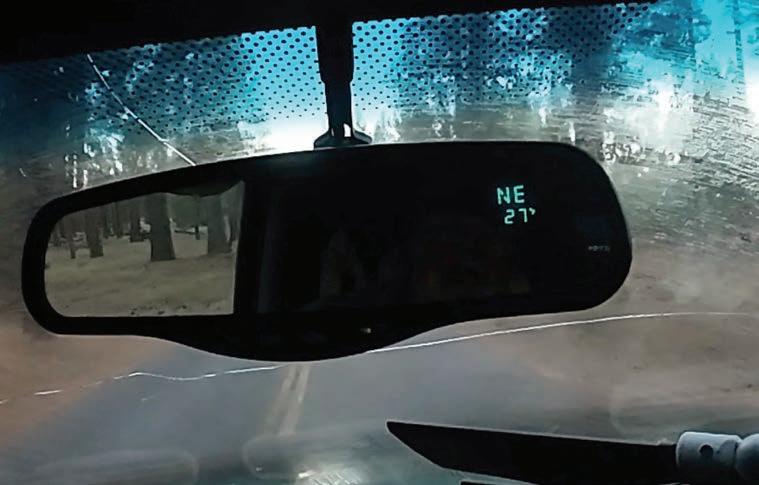





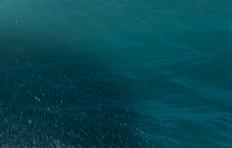







trout move shallow again. If you’re fly or shore fishing, dawn and dusk remain prime time. During calm afternoons, trolling deeper edges keeps rods bending.
The lake sits about 17 miles northwest of Susanville via Highway 139 and County Road A-1. Access is easy, but once there, you’ll find solitude. Spaulding offers campgrounds and some service, while Eagle Lake Marina at Gallatin provides boat launching, a fish cleaning station and store.
Susanville, the nearest town, supplies tackle, groceries and lodging options. The community’s connection to the lake runs deep, and locals are fiercely proud of “their” trout’s legacy. Eagle Lake isn’t just a fishery; it’s a symbol of resilience.
Against a backdrop of harsh high-desert weather and fluctuating water levels, the Eagle Lake rainbows continue to thrive. These trout are built for survival. Broad across the back, thick through the tail and radiant in color, they embody strength and beauty. Unlike planted rainbows elsewhere, these fish are true athletes that have been
forged by evolution to dominate their unique environment.
Catching one even feels different. The first run is blistering; the fight is steady and relentless. When an Eagle Lake rainbow comes to hand, it’s a connection not just to a fish, but to the land and the legacy of anglers who’ve cherished this place for generations.
EAGLE LAKE’S WATER levels are stable thanks to improved management and consistent winters.
The fishery remains healthy, with strong recruitment and continued hatchery support using wild broodstock from Pine Creek.
Anglers visiting in fall 2025 will find an incredible balance, with plenty of 1.5- to 2.5-pounders for consistent action and solid numbers of holdovers that push the scale past 6 pounds. The key challenge for the future is maintaining that delicate equilibrium between habitat, water allocation and recreation. It’s a balance that the Eagle Lake community continues to defend with passion.
As the first frosts dust the
sagebrush and the last flocks of pelicans drift south, Eagle Lake enters its finest hour. The crowds thin, the air turns crisp and the water cools. The trout grow restless and hungry while prowling the edges of their watery domain, their sides flashing crimson in the afternoon sun.
For anglers, there’s no better time. Whether you’re trolling the south basin at sunrise, casting a leech pattern in a glassy cove or watching your bobber vanish in the glow of evening light, fall here is an experience that stays with you.
Eagle Lake isn’t just California’s premier trout lake; it’s a timeless reminder of what happens when nature, science and passion align. The fish are strong, the landscape raw and the rewards unforgettable. If you’re ready for trout fishing at its finest, there’s one destination that should rise above the rest: Eagle Lake. The time is right now. CS
Editor’s note: Cal Kellogg is a longtime Northern California outdoors writer. Subscribe to his YouTube channel Fish Hunt Shoot Productions at youtube.com/ user/KelloggOutdoors.




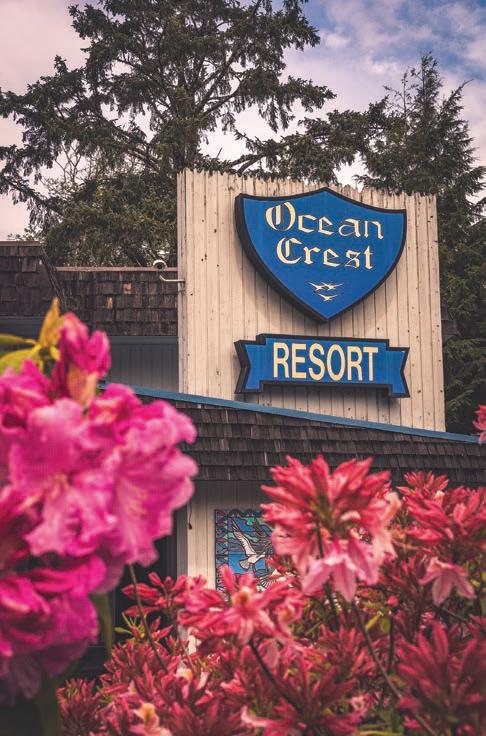



TROLLING WORMS FOR TROUT: TIMELESS TECHNIQUE THAT ENTICES BITES

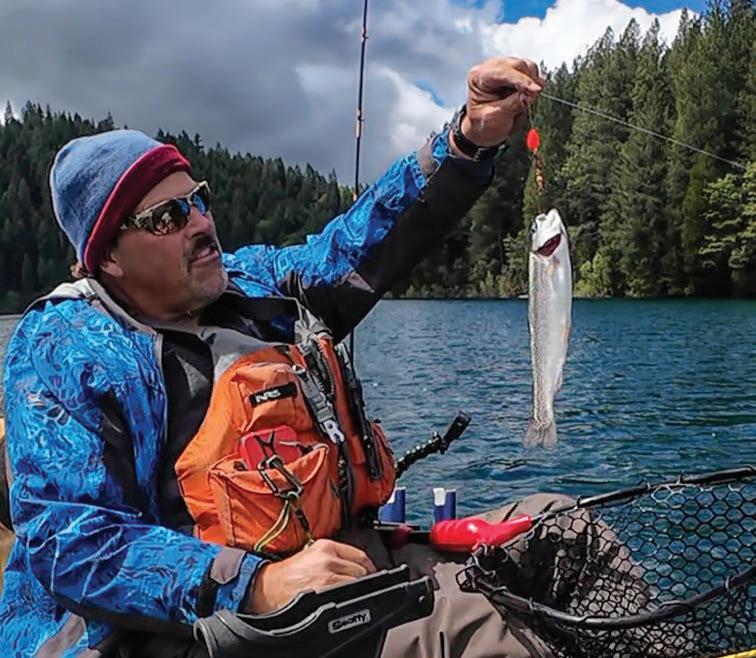
Spinner blades teamed with worms are often an irresistible combination for trout. “Worm trolling remains a cornerstone technique across the West,” says author Cal Kellogg, here with a trout caught on that very setup. “It’s versatile, simple and deadly effective.” (CAL KELLOGG)

A tub of fresh nightcrawlers is something no trout angler should leave home without. “Worms should be soft, natural and full of movement when cared for properly,” Kellogg tips. “Keeping them alive and frisky starts before you ever leave the dock.” (CAL KELLOGG)
By Cal Kellogg
Why will a trout hit a trolled worm? I can’t explain. It’s a question as old as the technique itself.
When you see a worm spinning slowly through open water, it doesn’t look anything like natural trout forage. Yet, for reasons we may never fully understand, trout – big, wary, well-fed fish that should know better – often hit a trolled worm with more conviction than any other offering. It’s a paradox that has saved many a slow day on the water. When a tackle box full of flash and plastic fails, the humble nightcrawler can turn a skunk into a success story.
Worms should be soft, natural and full of movement when cared for properly. Keeping them alive and frisky starts before you ever leave the dock. Always store your worms cool and moist, but never soaking wet.
On the water, I keep my nightcrawlers in a small insulated cooler with damp bedding. Canadian peat moss, damp newspaper or commercial worm bedding all work well.
Add a few ice cubes in a Ziploc bag – not directly on the worms – to keep temperatures steady in the 40- to 50-degree range. Never leave your worms baking in the sun or sealed tight without airflow. Even an hour of direct heat can kill them or make them sluggish.
Swap out bedding after every few trips, and remove dead or injured worms right away; they foul the container quickly.
For serious anglers, keeping a supply of healthy worms at home saves money and ensures you always have fresh bait ready to go. Setting up a simple worm bed or tub is easy and inexpensive.
Start with a large plastic storage bin or livestock trough – something about 2 feet deep and at least 3 feet long.
Drill a few small drainage holes near the bottom, filling it with a mix of topsoil, peat moss, shredded newspaper and organic compost. The key is a slightly damp, crumbly texture, and never muddy.
Add a starter colony of nightcrawlers and feed them small amounts of vegetable scraps, coffee grounds and crushed eggshells once or twice a week. Keep the bin in a cool, shaded area – ideally between 45 and 55 degrees.
Every month or so, fluff the bedding to keep it aerated and add a bit of fresh material. Avoid citrus, onions or greasy foods, which spoil and drive worms away. Properly managed, a single tub can keep you supplied for seasons, and the compost it produces is great for your garden. CK
While bank anglers have used worms for generations, boaters have refined the tactic into an artform. Anchoring and soaking bait can be effective, but trolling covers water and locates fish, especially in large lakes and reservoirs. That’s why worm trolling remains a cornerstone technique across the West. It’s versatile, simple and deadly effective.
When the worm tub comes out on my boat, it usually means one thing: conditions are tough. Maybe the trout are scattered, or maybe they’re seeing too many bright lures. Whatever the reason, that’s when I go old school. No fancy lures; just a worm, a hook and a slow, steady pull through the water.
Trolling a “naked” worm is the picture of simplicity, and that’s part of its beauty. My setup starts with the main line tied to a high-quality trolling swivel. On the other side, I attach a 24- to 36-inch leader of 8-pound fluorocarbon tipped with a No. 2 Mustad Slow Death Hook. Using a worm threader, I slide a whole nightcrawler onto the leader so that about half an inch of worm dangles behind the hook.
Rigged this way, the worm slowly rotates as it moves through the water – a subtle, hypnotic motion
that trout find irresistible. If trout are near the surface, I’ll add a couple of split shots above the swivel and topline the worm 100 to 150 feet behind the boat, keeping my trolling speed between 0.5 and 1.0 mph. If the fish are deeper, I remove the split shot and run the same rig 100 to 150 feet behind a downrigger ball or, better yet, troll it on one of my hybrid leadcore rigs.
That gentle spin is critical. The trick is to adjust the threading angle and speed until the worm has a lazy, rolling action. When it’s right, you’ll know.
One of the main reasons naked worm trolling works so well is stealth. There’s no noisy hardware, no flashing metal, no vibration from a flasher blade. In heavily pressured waters where trout have seen every lure in the catalog, that quiet, natural look can make all the difference. A worm creeping along behind a long line is subtle enough to fool spooky surface feeders, especially on calm mornings. It’s one of the most natural presentations in an unnatural environment – a kind of minimalism that plays perfectly to a trout’s instincts.
While I often run a naked ’crawler, the old-timers knew a thing or two about flash. Many anglers still pull threaded worms behind dodgers or flashers, and the results can be spectacular when the bite is tough or the water is slightly stained.
A small dodger such as a Sep’s Strike Master or Catch America Mini Willow Dodger adds side-to-side action and a pulse that makes the worm appear alive. Run the worm 12 to 24 inches behind the dodger in clear water, or closer – down to 10 inches – in murky conditions.
For more traditional setups, Ford Fenders or Dave Davis flashers still have a place. These classic blade chains attract fish from a distance, especially in deeper or darker water. The experimentation lies in the distance between the blades and the worm.

Some days trout prefer the bait tight to the last blade, while on others they’ll only strike a worm trailing 5 or 6 feet behind. Our grandfathers’ favorite rig – a Ford Fender and a nightcrawler – still catches trout all over California. High-tech gear may dominate tackle shops, but the trout themselves haven’t evolved past the appeal of a worm and some flash.
A highly effective modern twist on worm trolling involves pairing the ’crawler with purpose-built
trout spinners like Wedding Ring and Uncle Larry’s spinners. These lures are designed with small- to medium-sized blades and colorful beads that create flash and vibration without overpowering the worm’s natural appeal.
The key is balance, as in matching the spinner’s thump with the subtle scent and motion of a threaded nightcrawler. A classic Wedding Ring spinner, with its translucent red body and silver or gold blade, is perfect for clear-water conditions and sunny days.


The Uncle Larry’s series, known for its hand-tuned balance and soft color combinations, excels when trout are pressured or feeling finicky. Both styles can be run directly behind a small dodger or on their own 24 to 30 inches behind a swivel.
Thread half or a full ’crawler onto the trailing hook, leaving an inch or so of tail free to flutter.
Troll at about 0.8 to 1.3 mph and watch for that steady pulsing of the rod tip that tells you the spinner is working properly.
Because these spinners run light, they’re ideal for shallow or middepth presentations – especially in the upper 15 feet of the water column where wary trout cruise. In deeper water, add a small keel
sinker 2 feet above the swivel or clip the rig behind a downrigger ball.
The combination of flash, vibration and natural worm scent makes Wedding Rings and Uncle Larry’s rigs unmatched for triggering reaction strikes when trout refuse spoons or plugs.
But hardware isn’t the only terminal tackle you can tip with a chunk of worm. A piece of worm is ideally suited for tipping trolling flies. I’ve been in many situations where trout that wouldn’t touch a standard fly would jump all over one tipped with a ½- to 1-inch piece of ’crawler. This most commonly happens in situations where the water is colder than 50 degrees.
Trolling speed is the heartbeat of worm fishing. Too fast, and the worm spins wildly; too slow, and it drags lifelessly. The sweet spot is typically between 0.6 and 1.8 mph, depending on temperature and fish activity.
Use your sonar to locate suspended trout and set your presentation slightly above their level. Trout feed upward and not down. When they’re near the surface, longlines are king. When they’re deeper, downriggers or leadcore help you stay in the strike zone. Worm trolling shines in early-morning and late-evening light, especially during calm weather. When the wind comes up, the chop can actually help by adding natural lift and wobble to the bait.

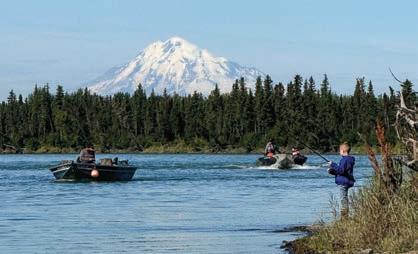


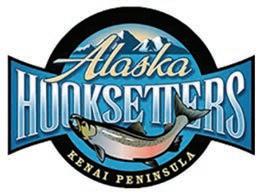


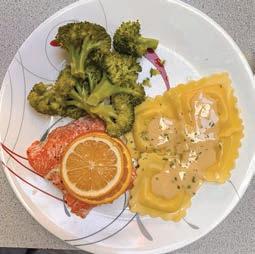
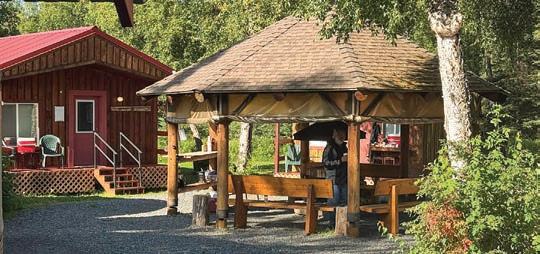



While worms catch fish yearround, each season requires slight adjustments. In spring, trout cruise the shallows looking for food after winter. Troll near points, creek inlets and bays where water warms first. Use long setbacks and light weights.
In summer, as surface water temperatures climb, trout move deeper. Use downriggers or leadcore and troll slower. Pair worms with spinners or small dodgers to get attention in deeper water.
In fall, the magic season, cooling temperatures draw trout back to the surface. Naked worms fished near rocky points or weed edges can produce trophy fish. Fresh, lively worms are the cornerstone of this technique (see sidebar, page 40).
In winter, when water temps drop into the 40s, slow everything down, fish deeper structure and be patient. CS
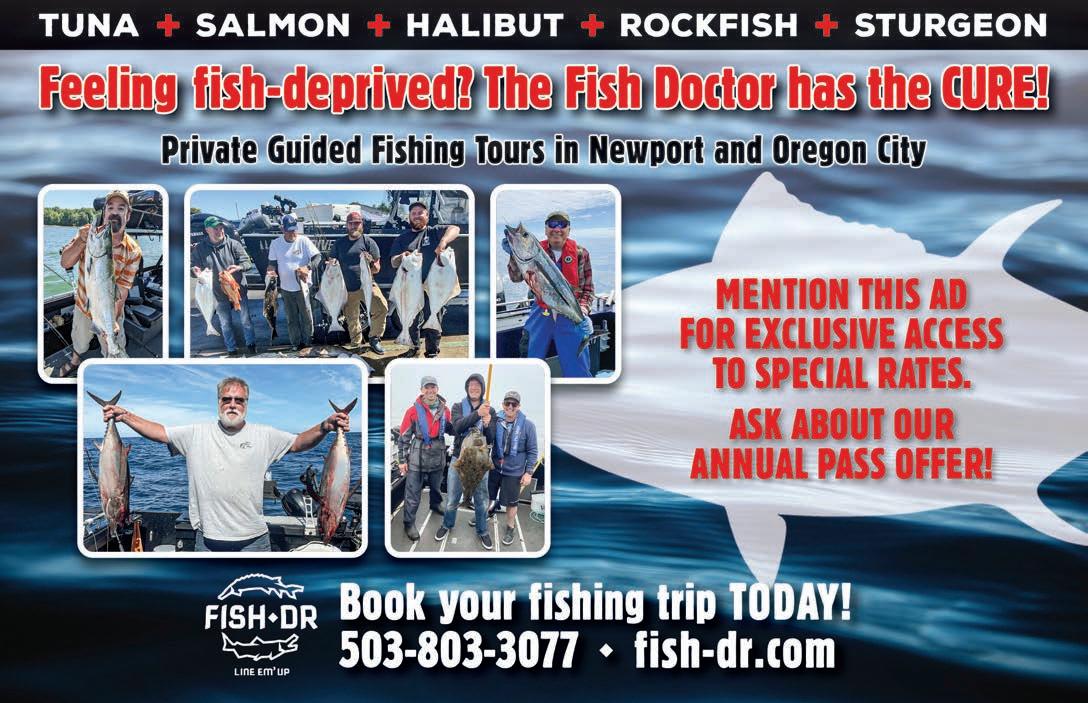

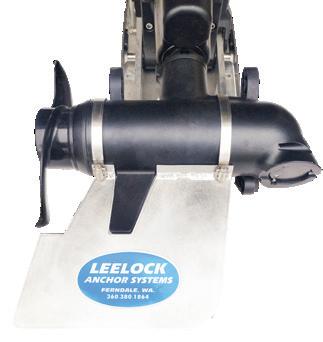
The LeeLock magnum Skeg #LMS-04 is made for Minnkota Instinct motors. It will drastically improve the steering performance and straight line travel of your bow-mounted motor. Not only does this Skeg improve your motor’s performance, it also makes it much more efficient. Your batteries will run longer on a charge. A LeeLock Skeg is a vital part of your trolling motor system. This oversized skeg is made of 5052 aluminum. The size is 8 3/4 inches high by 10 inches wide and it’s 3/16 inches thick. It comes with clear PVC coated stainless steel hose clamps.
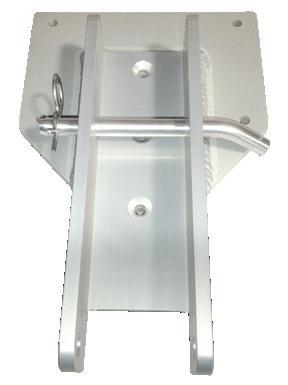
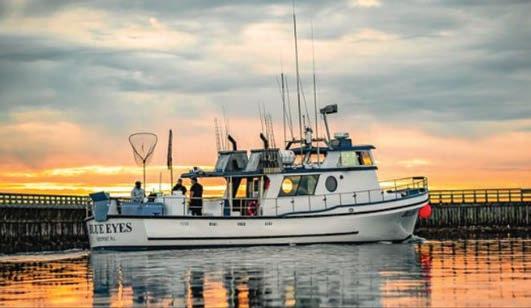



The Heavy-Duty Quick Change Base #QB-03 is like the standard Quick Change Base, but beefed up to provide a wider footprint. This provides a more secure mount. Like the standard Quick Change Base, the Heavy-Duty base allows you to easily and quickly switch between the #CRN-01 Columbia River Anchor Nest, any of the 3 Bow Mount Trolling Motor Mounts or the #BL-01 LeeLock Ladder. Simply remove the pin and slide an accessory out and slide another accessory in and replace the pin. The Heavy-Duty Quick Change base mounts to almost any power boat as long as the footprint fits on the bow area of the boat. It has 7 5/16 inch mounting holes. The Heavy-Duty Quick Change Base is handmade of aluminum. Go to LeeLock.com to order the Base alone or to add the CRN-01 Columbia River Quick Change Anchor Nest, the three Bow Mount Trolling Motor Mounts, or the LeeLock Ladder to your order.



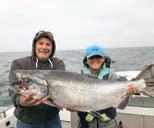
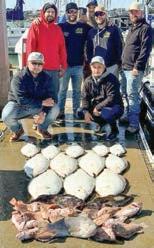


By Mark Fong
It had been a minute since I last shared a boat with fellow outdoor journalist and California Sportsman contributor Cal Kellogg, a man who wears many hats. In addition to being a freelance outdoor writer, he is a videographer, producer and fishing guide.
When Kellogg told me that he was shooting a steelhead video for lure company Catch America with guide Brett Brady and asked if I wanted to join them, I was all in.
Filming a fishing show can be challenging, to say the least, and there are days when things just don’t go to script. Perhaps the first indication of the day to come was Kellogg’s comical attempt to find the launch ramp.
I had met up with Brady at the entrance to the Feather River’s Gridley Ramp at 6:30 a.m. on a crisp, early-fall morning, and as we waited for the rest of the group to arrive, Brady’s phone rang. It was Kellogg and he was lost. Brady did his best to set Kellogg straight, but it was evident that he was having none of it. From our vantage point just off the main road, we watched and laughed as Kellogg drove past the turnoff multiple times.
After finally arriving, he was a good sport.
With Kellogg was Abdul Masri, an avid angler and the founding partner of Catch America (catchamerica.com), a multi-media fishing company.
“The mission of Catch America is to connect people with nature through fishing by making fishing more accessible, educational and community driven,” Masri says.

Sometimes a plan doesn’t always go perfectly, but a filming project chronicling a Feather River steelhead fishing trip ultimately was a success. (CATCH AMERICA)
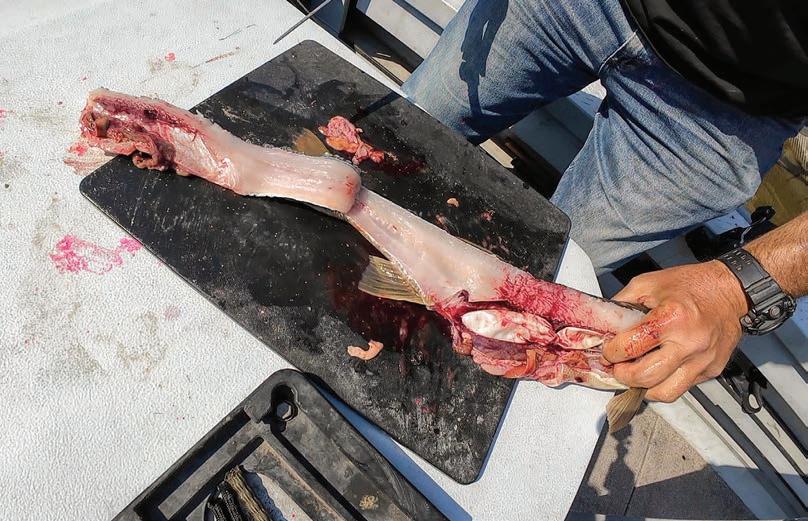
“The edges were really good, but the middle tasted a little like carp,” Catch America founding partner Abdul Masri reported after harvesting and cooking up a maligned pikeminnow he caught that day. “I think if you were to soak it in milk, it would be perfect.”
Most fishermen would not consider eating a pikeminnow, but Catch America’s Abdul Masri is not your average fisherman. Masri is a hardcore angler who absolutely loves fishing. He has fished all across the country – from Alaska to Florida, New York to California. By his own admission, he is also quite adventuresome from a culinary standpoint, so a pikeminnow catch-and-cook video fit right in his wheelhouse.
“The pikeminnow is bony, so we filleted it. The meat is awesome; it’s white and flaky. The way I cooked it, I was gonna fry it, but frying sometimes takes away the taste of the actual fish, so I wanted to make it in a simpler way, and I could really taste the fish itself,” Masri said. “So I sauteed it with salt, pepper and garlic powder in a pan with olive oil. My son tasted it with me and he liked it.”
“The edges were really good, but the middle tasted a little like carp. I think if you were to soak it in milk, it would be perfect. The texture, the flakiness – it is so good minus the bones. I think if you spoon the meat out and make fish cakes, it will be perfect. No one would know what kind of fish it was.” MF
“It is a platform where guides can help regular joes and weekend anglers to take their kids and families fishing,” he adds. “To know where to go and what to use to catch fish and to have a grand time and to experience nature. Although we do sell products, we are not really a tackle company. A lot of the lures that we offer, the shapes and colors are designed by these guides. At heart we are a media company that is building a bridge between the industry experts and the regular fisherman.”
The primary medium by which Catch America interfaces with its audience is through its popular YouTube Channel. There, anglers can find fishing reports for Northern and Central California, tips and tactics, in-depth tutorials, product showcases and a host of other fishing-related content.
ROLL CAMERAS
At the ramp, Brady finished rigging our rods while Kellogg and Masri quickly set up all the video and audio
While it took one of the guys a little while to find the Gridley Ramp, once the crew was on the Feather, sunrise over the river made everything worthwhile. (MARK FONG)

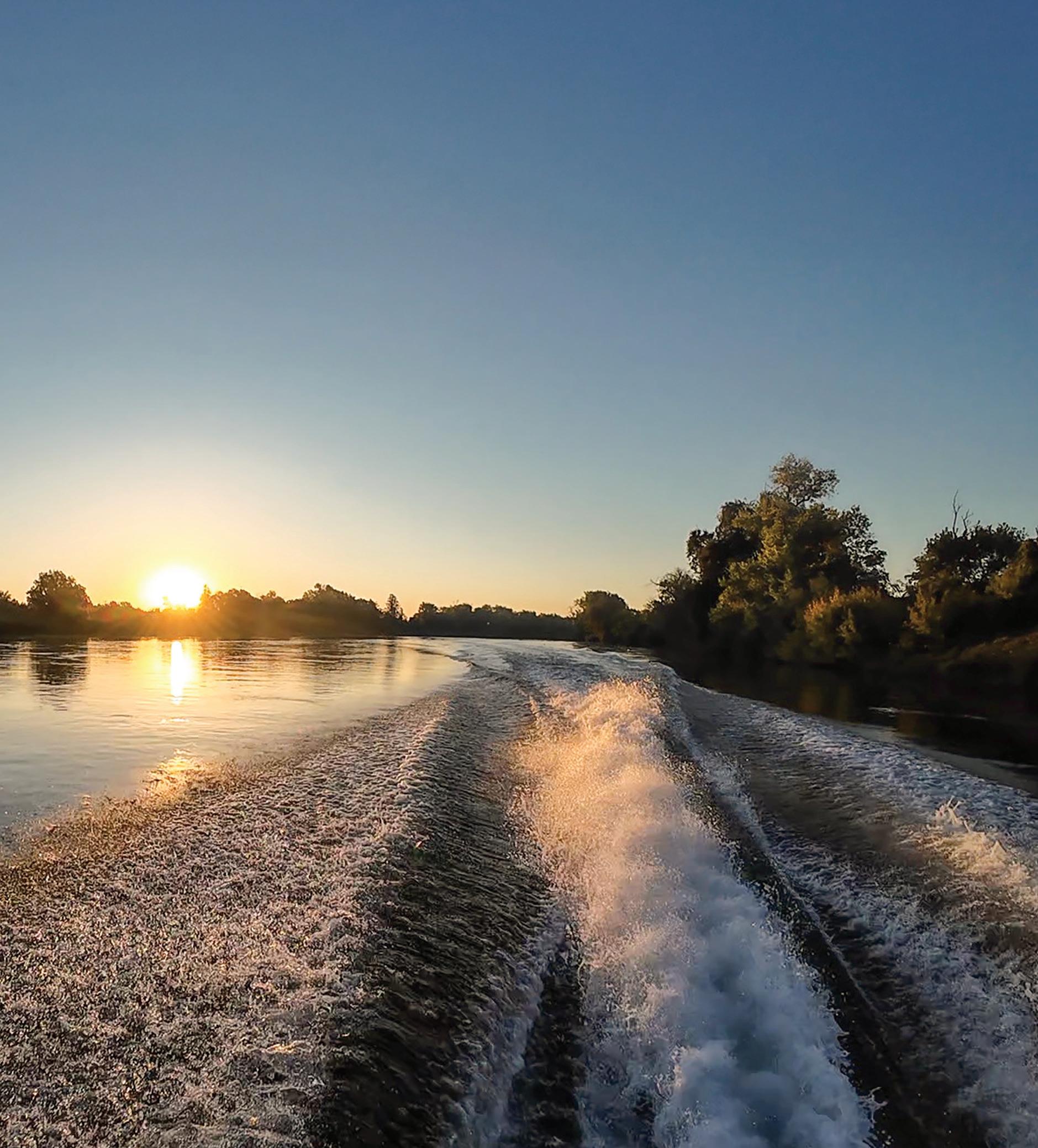

gear. As Brady idled upriver, the three discussed the agenda for the day and then it was full speed ahead to our first spot of the morning.
I made my first cast, and as my gear settled and began to drift I was hyper-focused on putting a steelhead in the boat. After just a minute or so, I got bit. I waited a second for the rod to load up before lifting and reelsetting on the fish.
Once I felt the weight of the fish, something did not feel right. As it neared the boat I got a first glimpse
that confirmed my suspicions this was not a steelhead. Instead, it was a pikeminnow, an unfortunate foreshadowing of things to come.
As much as steelhead love to eat salmon roe, so do a host of other fish, including pikeminnows and suckers. But while striped bass love to eat pikeminnows and suckers, these native minnows are largely considered undesirable by anglers.
As we moved from spot to spot, the pikeminnows continued their biting frenzy. It was one after another, with
many double hookups. But where were those steelhead?
COLD STEEL
And then it happened: Brady positioned the boat at the top of a nice run, and before I knew it, he and I were both hooked up with nice steelies. There is no mistaking the fight of a steelhead, and after spirited battles we both had fish to the net. This created a sense of relief and smiles all around as Kellogg chronicled the events of the day.

at marine.honda.com or visit your Authorized Honda Marine Dealer.





This was the high point of the trip from a steelhead perspective. At the end of the day we ended up catching a half dozen or so steelhead. It was not what we had hoped, but that is how fishing goes. And on a day dominated by pikeminnow catches, Masri decided he wanted to harvest one for a catch-and-cook video (see sidebar on page 48).
All in all it was a great day on the water with Brady, Kellogg and Masri. I am grateful that they allowed me to be part of their latest adventure. CS
Editor’s note: To book a trip with Brett Brady of Brett Brady’s Bare Bones Guide Service or to learn more, please visit his website at fishbarebones.com, follow him on Facebook at Bare Bones Guide Service or contact him directly at (530) 263-4451. For the full library of Catch America videos, including this trip to the Feather River with Brady, and the steelhead catch-and-cook and the pikeminnow catch-and-cook episodes, please visit the Catch America YouTube Channel at youtube.com/@catchamerica. You can also visit catchamerica.com for its store and other features.


Michlitch Company spokanespice.com
Michlitch

MarDon Resort mardonresort.com








The M1200 cartridge chambered in 6.5 Creedmoor is the designated ammunition for the US military’s MRGG-S (Mid-Range Gas Gun-Sniper) weapon system. The Black Hills M1200-C (Commercial) version features a 140-grain OTM projectile loaded to 2,750 feet per second from a 22-inch barrel. The match primers are staked securely in the primer pocket to ensure flawless performance during suppressed semiauto fire. The propellant is selected for temperature stability to ensure reliability and avoid velocity variation in extreme environments. When accuracy, reliability and long-range external ballistics are required, the M1200-C from Black Hills is the answer.


Hi-Point Firearms hi-pointfirearms.com
Hi-Point Firearms offers some of the best value-pricedfirearms,andthe995,1095P and4595Pfitperfectlyintothatposition. Builtaspistols,thesefirearmsaremore compactthanthecarbinecounterparts andaddmoreversatilityinasmaller size,whileofferingthesamelegendary reliabilityandaccuracy.Multiple configurationsareavailable–findyours todayonthewebsiteabove.




Alaska Butcher Equipment & Supply alaskabutcherequip.com
Hunting and fishing processing equipment. Alaska Butcher Equipment & Supply has all you need to process your own hunt or catch! Local and family-owned.

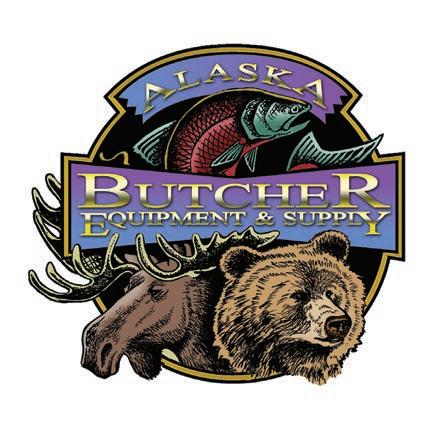

PursuitUp
pursuituptv.com


Tim’s Special Cut Meats
timsspecialcutmeats.com All the holiday fixins! Prime rib, tenderloin, steaks, turkeys, hams and more. Also offering gift certificates and freezer meat packages. Great gifts for the hard- to-shop-for person on your list!


PursuitUp is a premium on-demand streaming app built for outdoor enthusiasts. Watch your favorite hunting, fishing and adventure shows anytime, anywhere. For just $4.99/month or $49.99/year, enjoy unlimited access to exclusive content from the Pursuit Channel and top outdoor producers. Start your one-month free trial today –cancel anytime. Stream on your phone, tablet or smart TV and take the outdoors with you wherever you go.


MT E.L.K., Inc. elkinc.com
MTMakethisChristmaslegendarywith SearchingE.L.K.,Inc.huntingcallpackages! fortheperfectgiftforthe hunter who has it all? Look no further from–theChristmashuntingcallpackages MTE.L.K.,Inc.bringthethrillofthewildrighttotheirstocking! Fromtheelectrifyingbuglesof elktotheheart-poundingchaseof callantelope,deerandpredators–there’sa foreveryseasonandeveryhunter. Hand-selected,field-provenand arefullofholidayspirit,thesegiftsets givebuilttoinspire.Ordernowand thegiftofadrenaline,adventure andunforgettablehuntsthisholiday season!


Boat Insurance Agency boatinsurance.net

All Rivers & Saltwater Charters allwashingtonfishing.com
The Boat Insurance Agency is an independent agency representing the best marine insurance companies. They carefully compare a number of policies to find the lowest premiums and best values for your boat insurance needs. Boat Insurance Agency is owned and operated by Northwest boaters. They have the local knowledge needed to understand boating in the West, along with your special needs. Contact them for an insurance quote and to learn more about the value and service they can offer. Nomar nomaralaska.com


All Rivers & Saltwater Charters provides you the highest quality experience. From avid anglers to first-time fishermen, they always strive to improve your skill and technique. Whether you’re fishing in Seattle, Westport or anywhere in between, you can expect the highest quality service, boats and equipment.
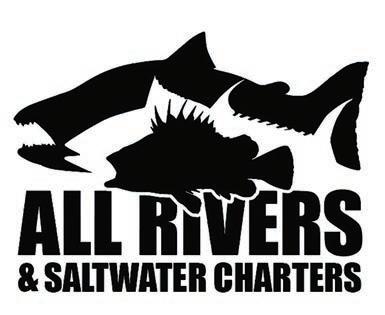

The Nomar boat bag is a versatile splash-proof bag to tote your gear to the boat, to the beach or wherever a tough, heavy-duty bag is required. The top zips closed to protect its contents. Features heavy-duty carry handles and D-rings on the side to add a carry strap. Measures 15 inches by 10 inches by 15 inches. Available in lots of colors.


The Lodge at Otter Cove lodgeottercove.com
Give someone special the gift of an Alaskan adventure! The Lodge at Otter Cove’s all-inclusive three-day, fournight package includes three guided adventures, your accommodations, and all of your meals. Book before Christmas and receive 2025 pricing! Check out the website above or give Joe a call at 907-299-6450 for details.

Exquisiteknives.com exquisiteknives.com Exquisiteknives.comisoneoftheleadersinhighend custom knives. Dave Ellis, owner and American BladesmithSocietymastersmith,isalifelongcollector and sells some of the rarest and most beautiful piecesofedgedartknowntoman.Withnames like Bob Loveless, Bill Moran and MichaelWalker, Exquisiteknives.com’scarefullycuratedcollection meetstheneedsofanytop-endknifeaficionado.With friendshipswithtopartistsworldwide,Daveisableto procurethosedifficultandrareknives. PicturedisanamazingFoldingArtKnifeby Wolfe Loerchner.





leelock.com
The perfect gift for the serious angler!
The LeeLock Magnum Skeg #LMS-04 is made specifically for Minn Kota Quest motors, boosting steering control, straight-line tracking and overall efficiency. Give the gift of longer battery life and better on-thewater performance this season!
Ideal for anglers running bow-mounted Quest motors. (Check out #LMS-01, #LMS-02 and #LMS-03 for other models.)
Make their fishing trips smoother, smarter and more enjoyable – a Magnum Skeg belongs under every tree!
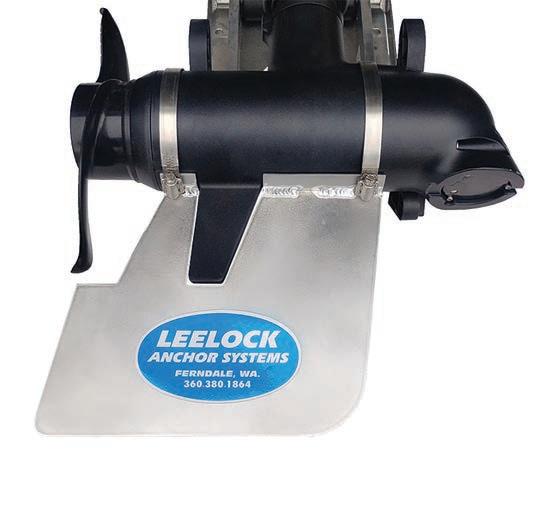


907-513-5131
Early 2026 booking discount when booked before December 31, 2025, for any available 2026 dates. An entire day of offshore fishing for up to six people is $2,000. (Private boat for your group, drinks, light snacks and coffee included.)


For a limited time, Back 30 Outfitters is offering discounts on their whitetail hunts for the 2026 hunting season.
Located in Northcentral Idaho, all their hunts include food, beautiful lodging and guaranteed outfitter tags. Spot and stalk/glassing/stands. Normally priced at $4,500 for five days, the discounted price is $3,500 per hunter or $3,000 each for two-plus hunters. Can also upgrade your hunt to an elk/deer combo hunt! Cheaper options for semi-guided are available. Call 208-301-7050 or visit the website for more information.

Coastal Marine Engine
coastalmarineengine.com
Receive 10 percent off labor on any scheduled maintenance between January 2nd and February 28th. Please use the discount code NWSM2026 when booking your service.
Black Star Fishing Co. is a premier guide service specializing in salmon and steelhead fishing on the finest rivers in the Northwest. Spend adayonthewaterusingtop-of-the-line gear,aboardacomfortableboat,andledby afriendly,knowledgeableguidededicatedto makingyourfishingexperienceunforgettable. Now booking winter steelhead trips for 2025 and 2026. Gift certificates available!
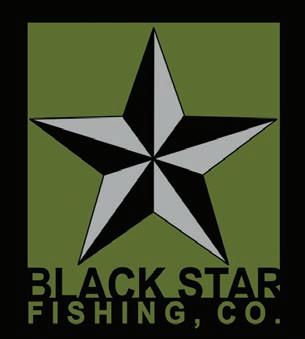



PrOlix is a penetrating solvent/dry lube product that was lab-developed and tested by law enforcement, military and commercial shooters over many years.
The citrus-based biodegradable cleaner, pioneered in 1995, is the first successful“all in one”gun care product, now deemed“Bio-Technology.”Their recyclable (strain and reuse) products are made of 89 percent or greater renewable resources, a true commitment to sustainable practices and caring for the environment. As such, the USDA has listed PrOlix as a BioPreferred Product since 2012.
The solvent“goes on wet, cleans, bonds, and the lube turns dry to the touch.”It removes carbon, copper, lead, shotgun plastic residues and black powder. PrOlix will not damage wood, freeze or flash off, and it can be used for commercial and industrial applications as well.
To complement the PrOlix Cleaner/Lubricant (Dry Tech) line, shooters can use the equally superior“gun-oil and grease replacer”PrOlix Xtra-T Lube for a total care product.


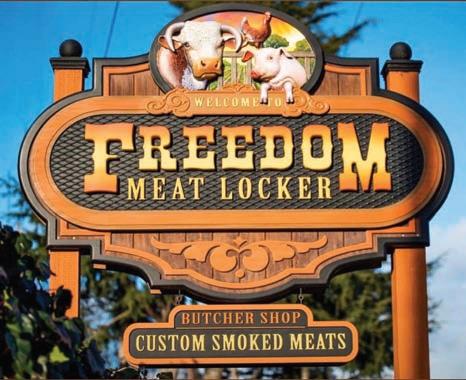

Northern Rockies Adventures nradventures.com/fishing Givetheultimatefishinggift:anall-inclusivefly-in fishingadventurewithNorthernRockiesAdventures! FlybyfloatplaneintotheheartofBritishColumbia’s pristineMuskwa-KechikaWilderness,castingforwild trout,pike,graylingandmoreacrossremoterivers, streams and lakes. Guidedbyover40yearsofexpertise,eachtrip includespremiumlodgeaccommodations,gourmet dininganddailyfloatplanefly-outstounforgettable fishingdestinations.Agiftofadventureandrefined comfort,createlastingmemoriesinoneofCanada’s mostspectacularwildernessregions.

offgrid.co

FreedomMeat Lockers freedommeatlockers.com service,FreedomMeatLockersisafullbutcherfamily-ownedand-operated shop,locatedinFreedom, servingCalifornia.Theshophasbeenproudly thecommunityfordecades.embraceAtFreedomMeatLockers,they approachatraditionalandold-school tobutchery,butcombineandthatmindsetwithmoderntools producttechnologytoensureevery isperfect.Theircommitmenttoexcellencehasearnedthem numerousstateand nationalawards.

yaquinabaycharters.com
Give the gift of adventure on the Oregon Coast! A deep-sea fishing or crabbing trip in Newport is the perfect present for experienced anglers and beginners alike. Gift certificates can be used for exciting trips targeting rockfish, halibut, albacore tuna, salmon and Dungeness crab. Buy online for instant email delivery or order easily by phone.Treat someone special to an unforgettable day on the Pacific! Call 541-265-6800.

OffGrid creates premium signal-blocking gear designed to protect your digital privacy and security. From Faraday bags to backpacks, every product is engineered to shield your devices from a wide range of invasive signals, keeping your data and location safe wherever you go. Built for modern travelers, tech users and privacyconscious individuals who value security without compromising on style.



